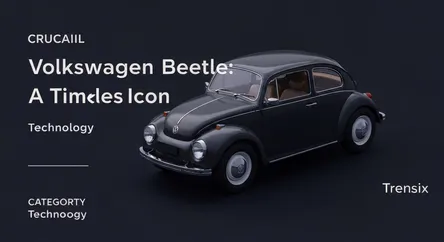Technology
Volkswagen Beetle: A Timeless Icon

Discover the Volkswagen Beetle, the iconic 'people's car' with a rich history. Learn why this classic automobile remains a beloved cultural symbol.
What is it?
The Volkswagen Beetle, affectionately known as the VW Bug, is a two-door, rear-engine economy car that became one of the most recognizable vehicles in automotive history. Conceived by Ferdinand Porsche in the 1930s as a reliable and affordable "people's car" for Germany, its distinctive rounded shape and air-cooled engine set it apart. The original Type 1 Beetle was produced from 1938 until 2003, with modern successors like the New Beetle and Beetle (A5) continuing its legacy until production finally ceased in 2019 after over 21 million units were sold globally.
Why is it trending?
The Beetle's enduring popularity keeps it trending through nostalgia and a vibrant classic car scene. Social media platforms are filled with images of restored and customized Bugs, celebrating their timeless design. Interest is often renewed by pop culture references, automotive anniversaries, and the growing trend of converting classic cars to electric powertrains. Its status as a collector's item means well-preserved models command high prices, keeping it in the conversation among enthusiasts and investors.
How does it affect people?
For many, the Volkswagen Beetle is more than just a car; it's a powerful cultural symbol. It represents simplicity, affordability, and the counter-culture movement of the 1960s. It often evokes strong personal memories, from being a first car to family road trips. The Beetle's legacy fosters a passionate global community of owners and fans who participate in car shows, clubs, and restoration projects. This shared enthusiasm ensures that the car's spirit of individuality and accessibility continues to influence new generations of car lovers and designers.